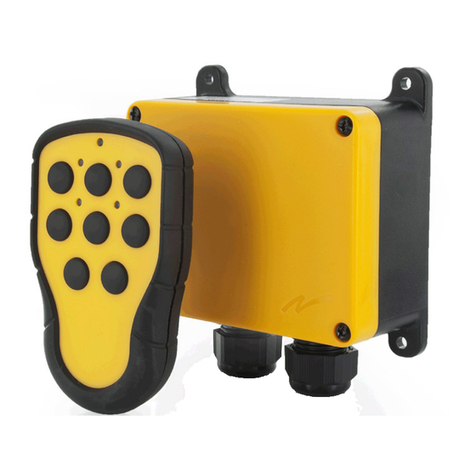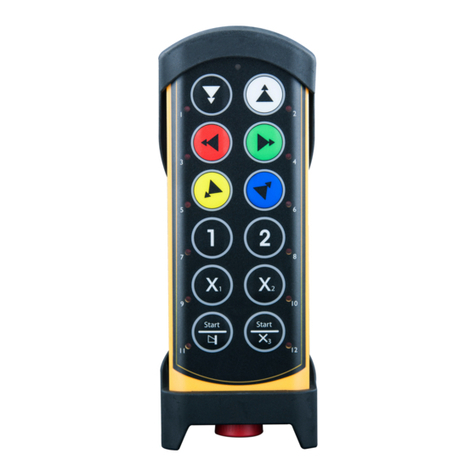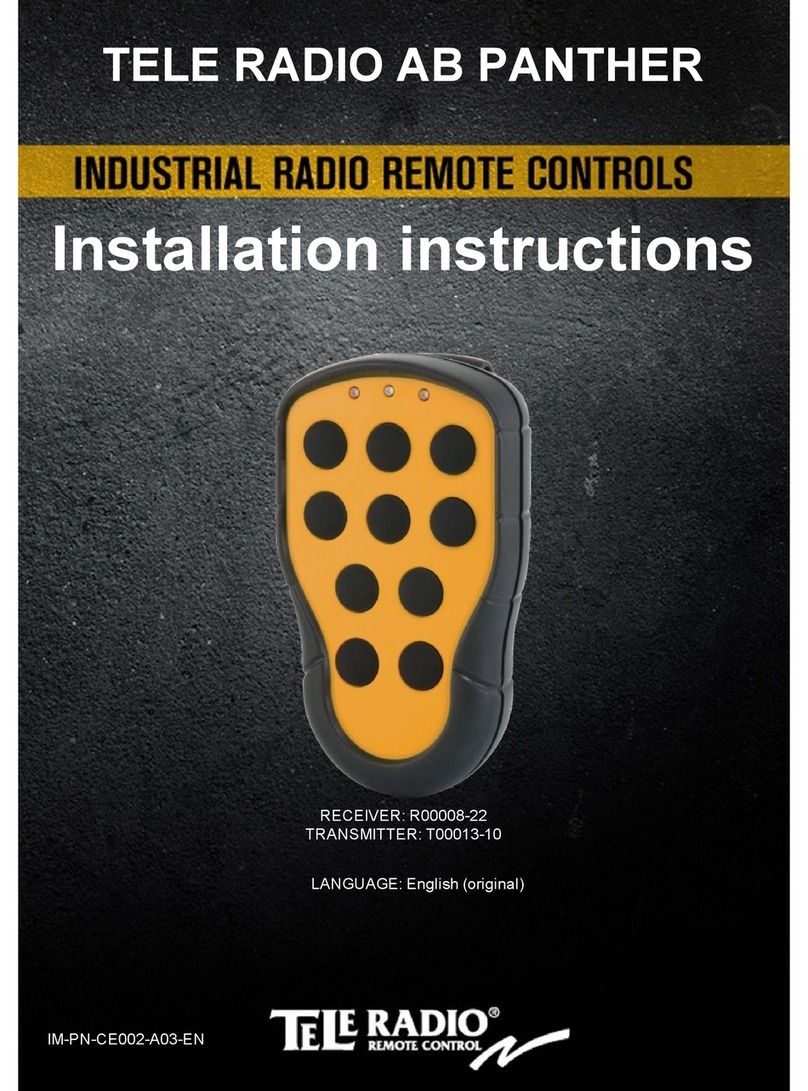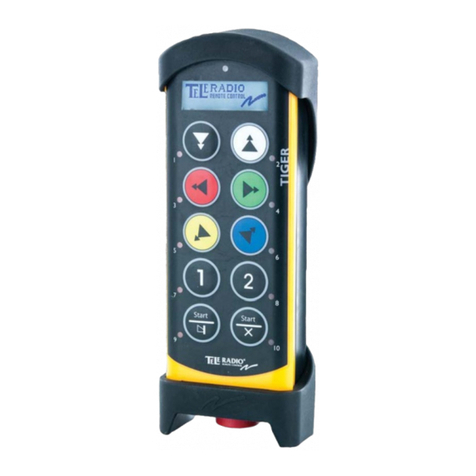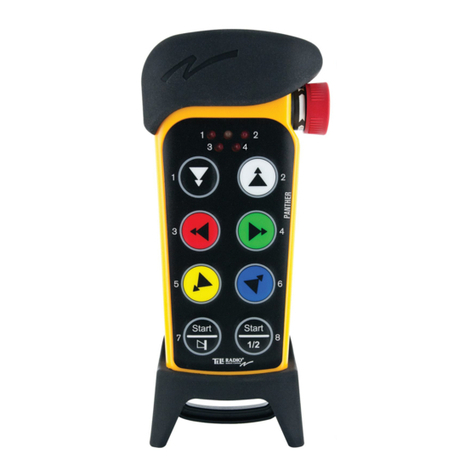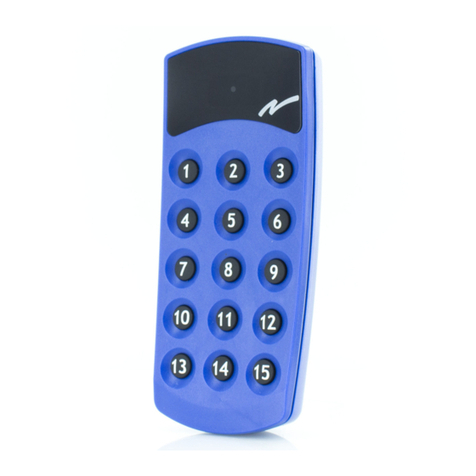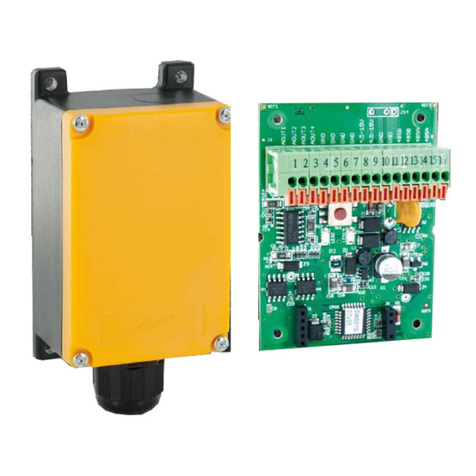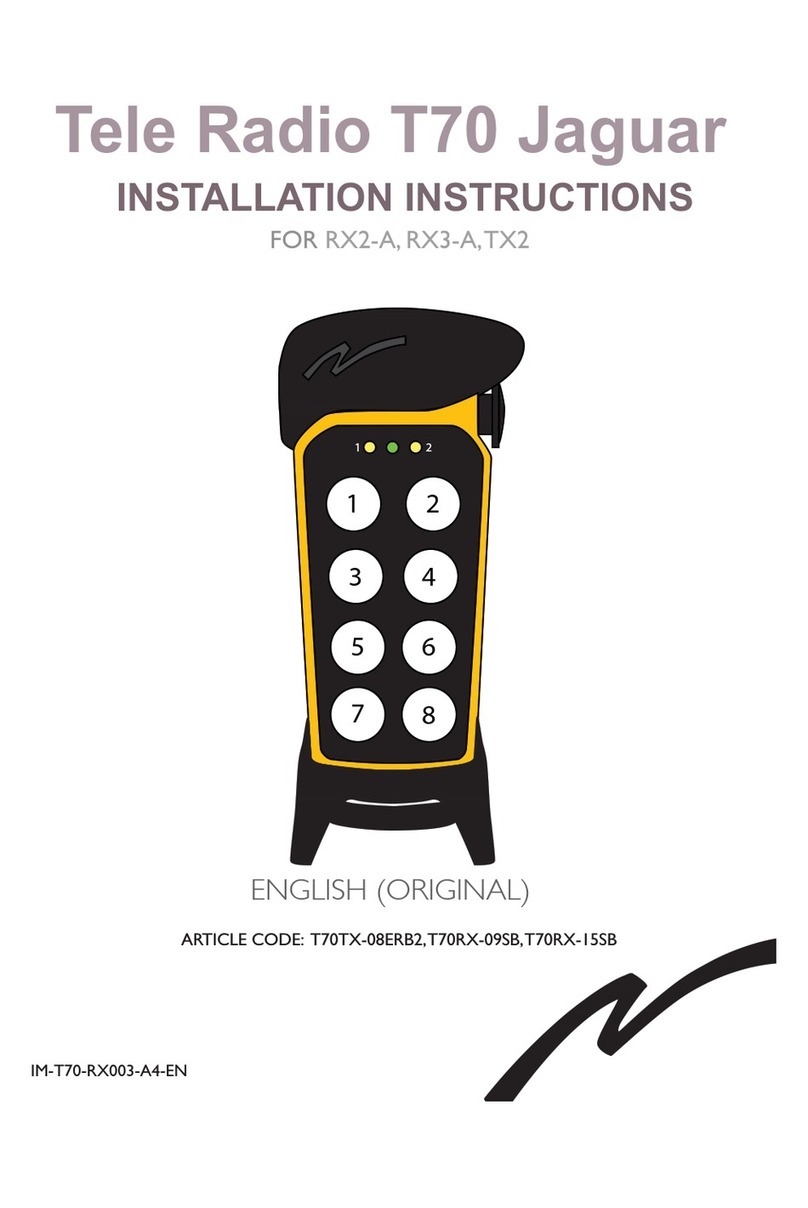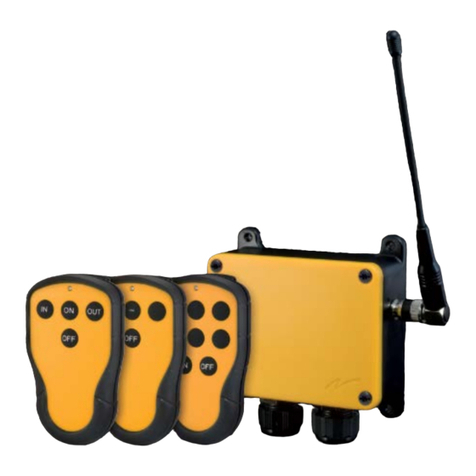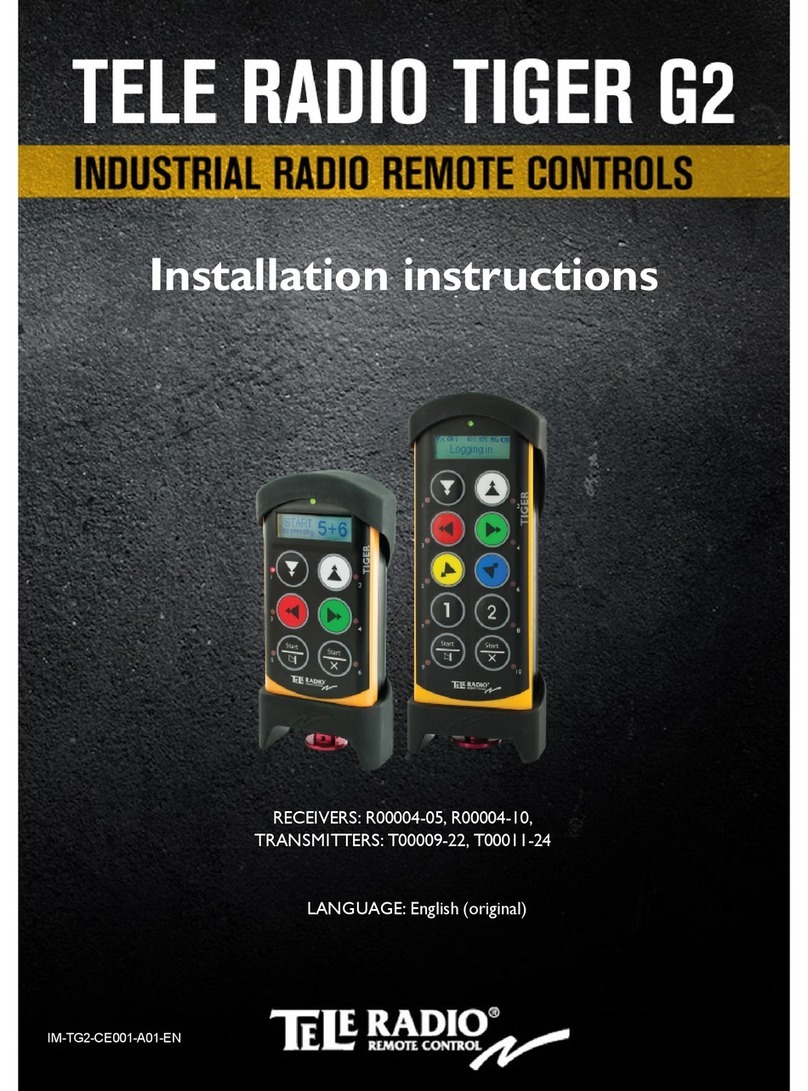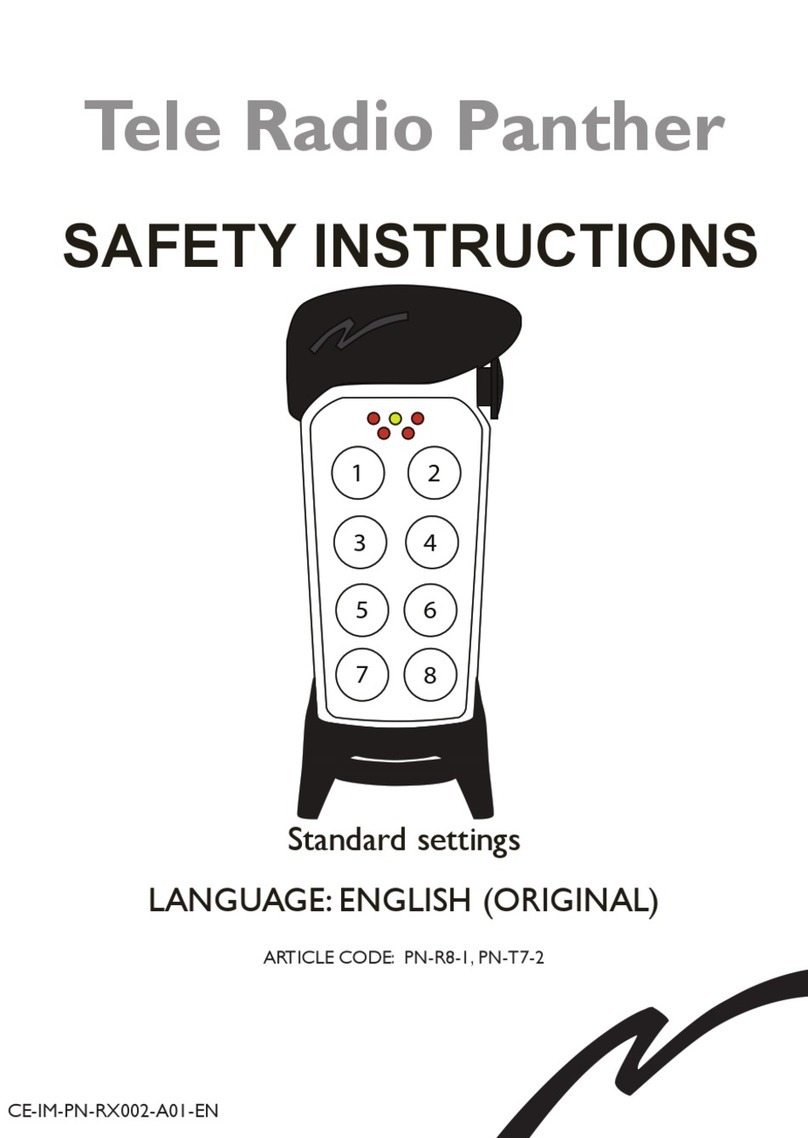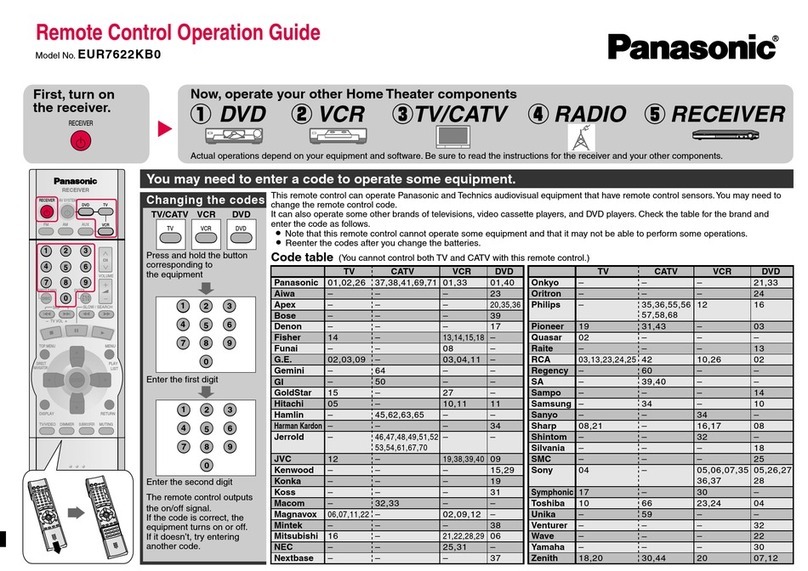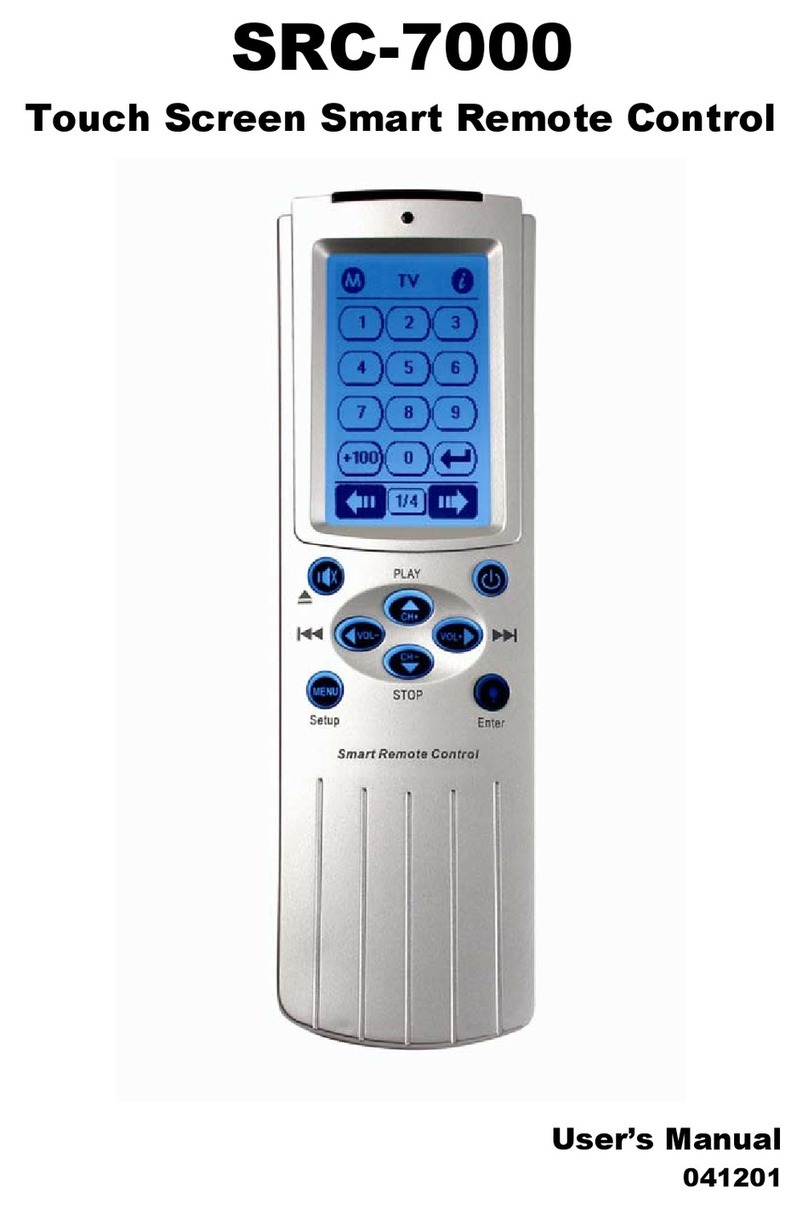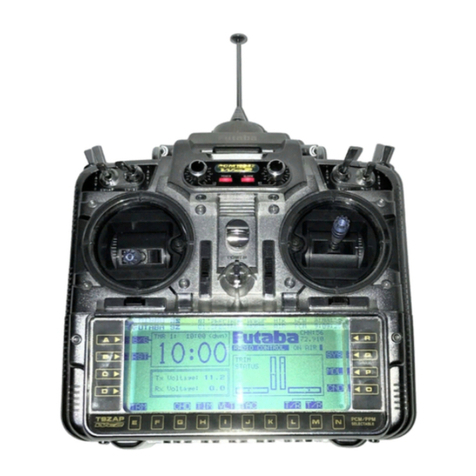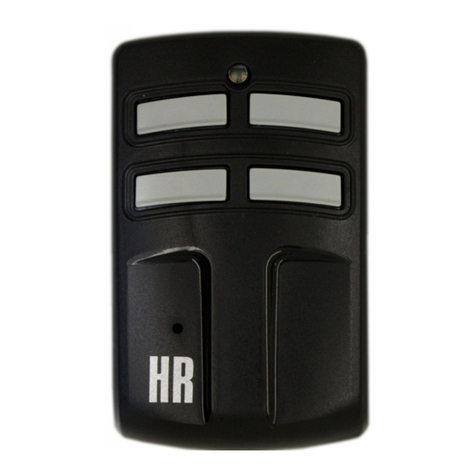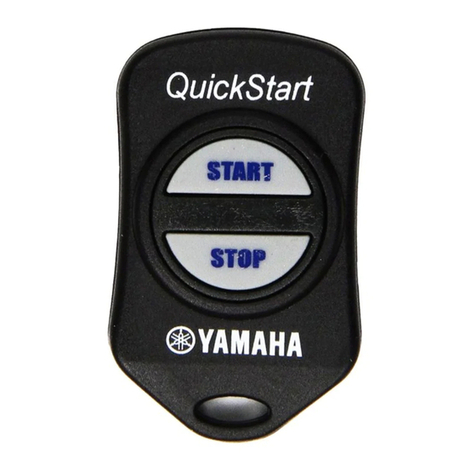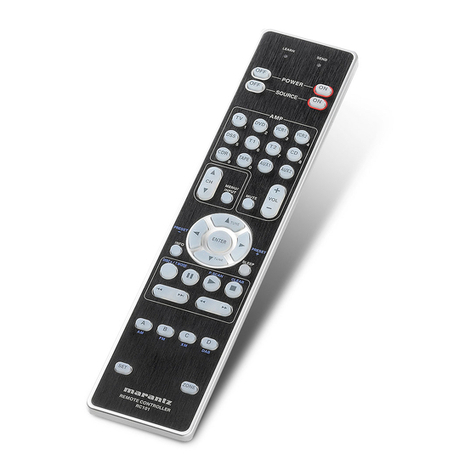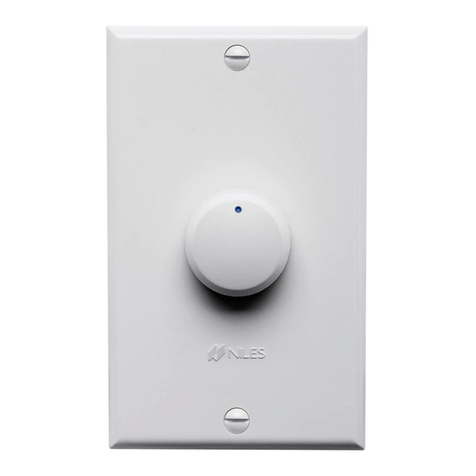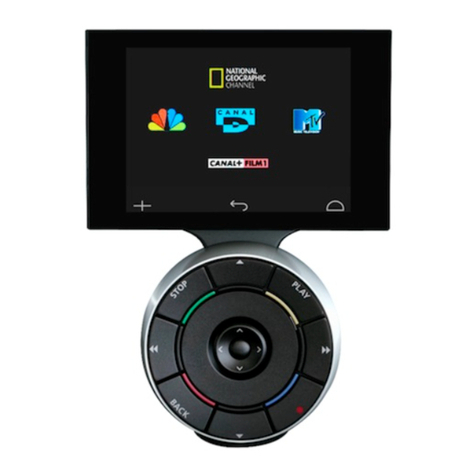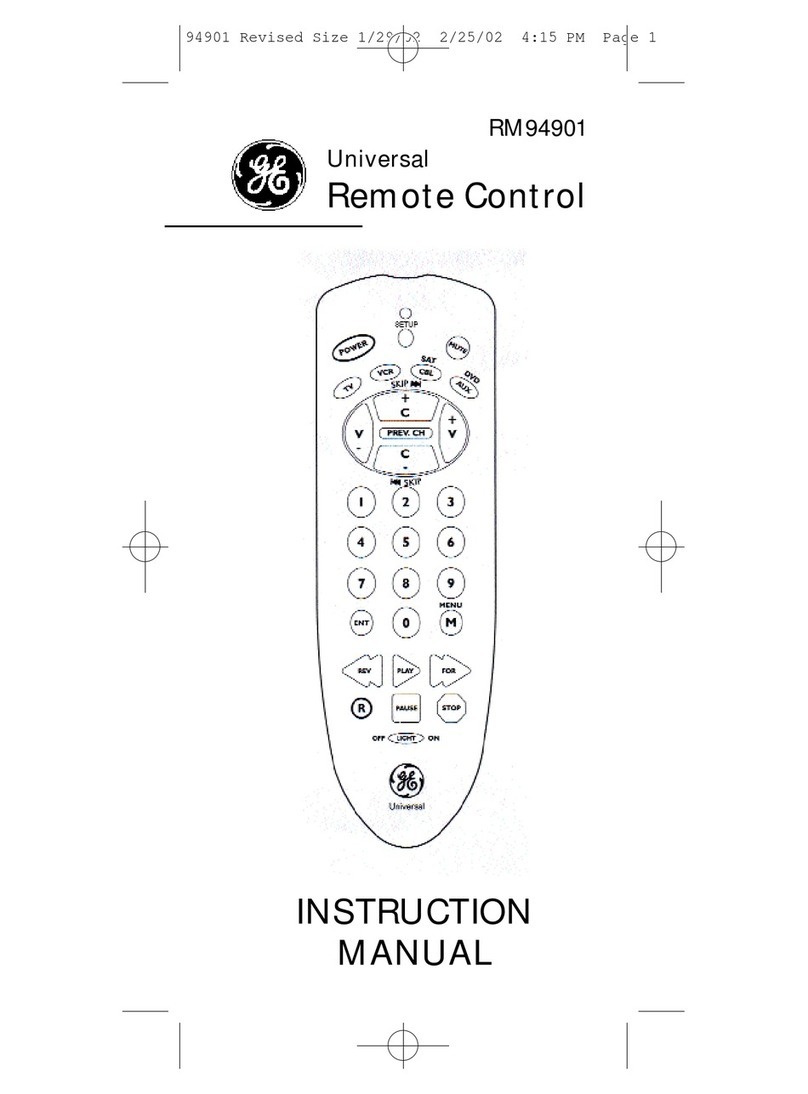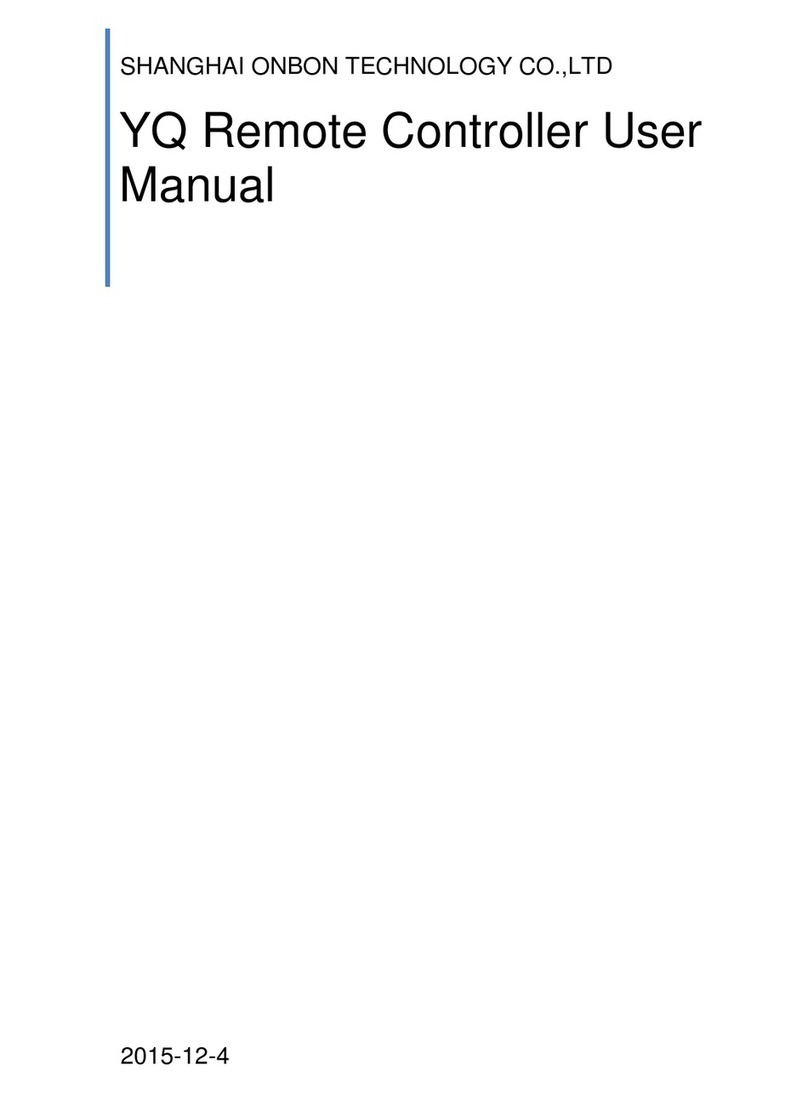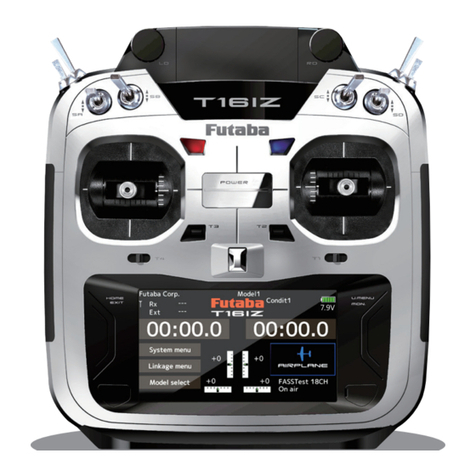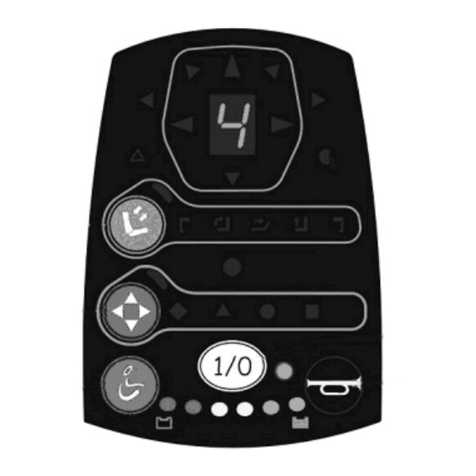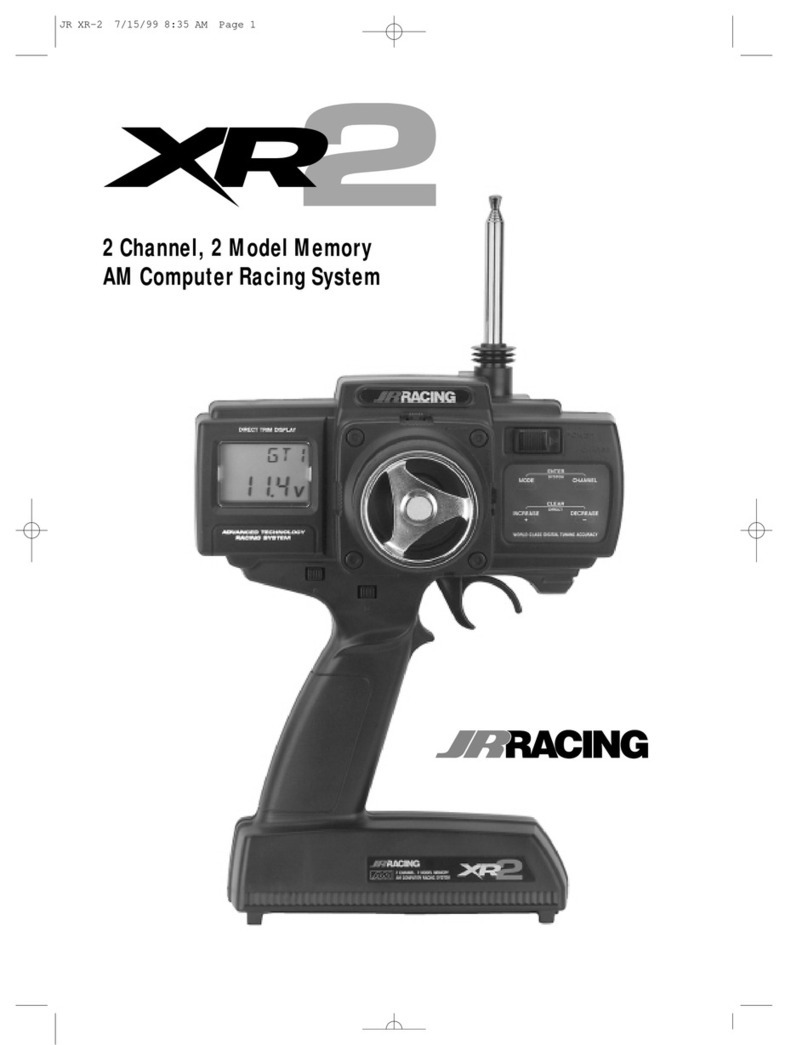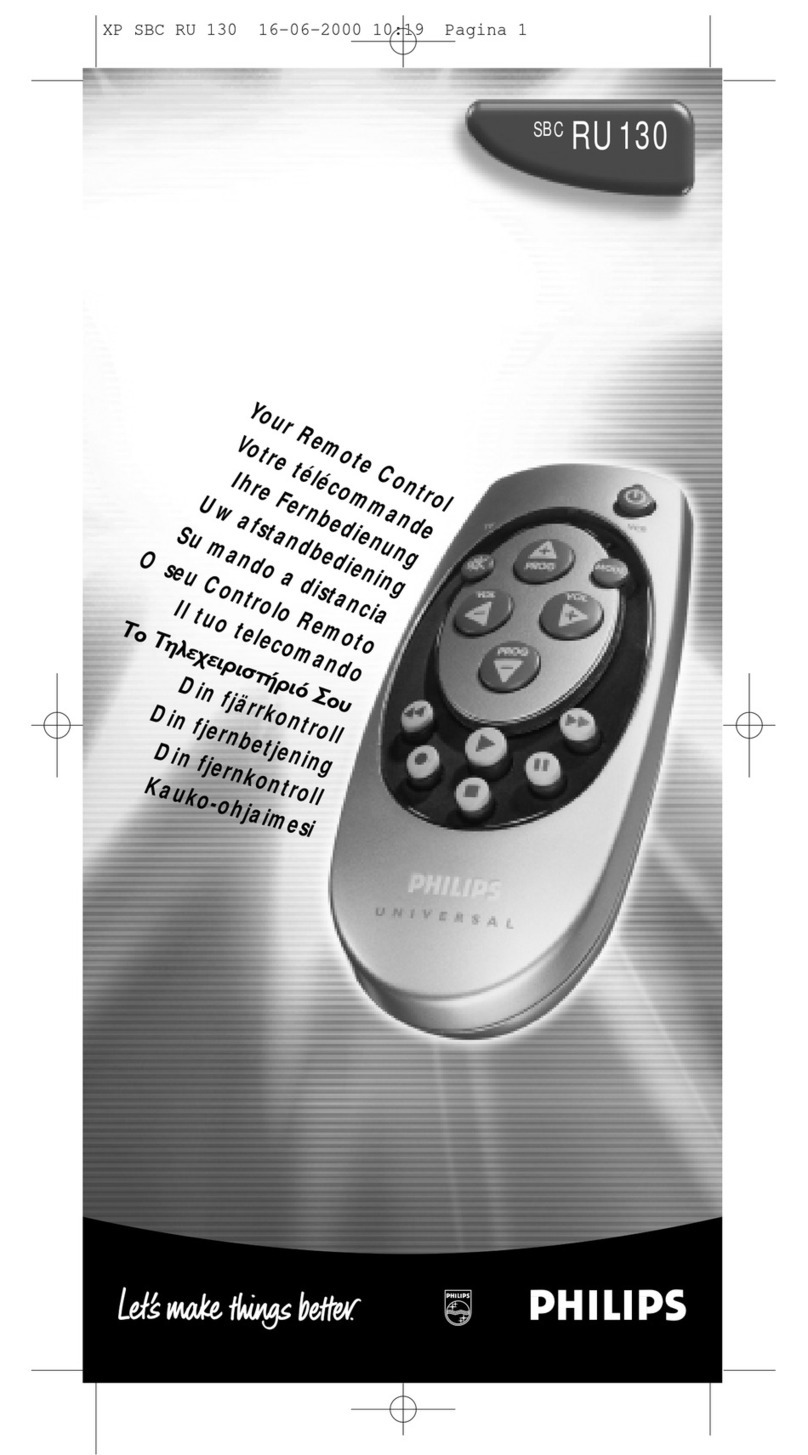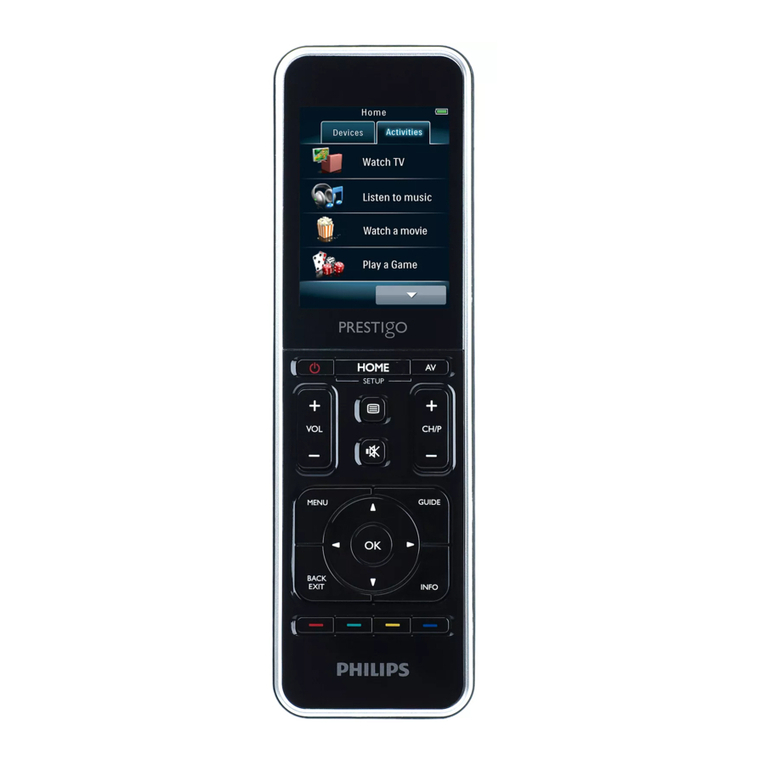
SYSTEMINFORMATION(INENGLISH)
System requirements
The product holds one or two safety-related functions that comply with the requirements for SIL3
according to IEC61508:
Stop function: Deactivates all relays on the receiver when the stop button on the transmitter is pressed.
The stop function is available on all Tiger systems. The maximum delay of the stop function is 500 ms.
Safe function: Activates the safe function relays on the receiver when both of the safe buttons on the
transmitter are pressed. The safe function is available on Tiger systems consisting of receiver models TG-
RX-MXL12, TG-RX-MXL28, TG-RX-MXR12, TG-RX-MXR28. TG-RX-MXLANY combined with any of
the following transmitters:
TG-TX-MDL10, TG-TX-MDR10, TG-TX-MDP10, TG-TX-MXL12, TG-TX-MXR12, TG-TX-JDL20,
TG-TX-JDL21, TG-TX-JDL22, TG-TX-JDL23, TG-TX-JDL24, TG-TX-JDL25, TG-TX-JDR20,
TG-TX-JDR21, TG-TX-JDR22, TG-TX-JDR23, TG-TX-JDR24, TG-TX-JDR25
The safety-related functions comply with the requirements for SIL3 according to IEC61508 only when
they are a part of a complete end user system that complies with the requirements for SIL3 according to
IEC61508.
Connecting and controlling the safety function
The stop function controls the stop relays from the stop button. The safe function controls the safe
function relays from the safe buttons. In order to comply with the requirements for SIL3 according to
IEC61508, the safety-related functions shall use their corresponding two relay output in an active
redundant configuration in a safety-related application.
Measures for probability of hardware failures
Transmitter stop function
Probability of dangerous failure per hour PFHd= 8.5 FITs (=λdu)
Fraction of total failure rate with dangerous and
detected consequence λdd= 357 FITs
Diagnostic coverage DC= 98.3 %
Safe failure fraction SFF= 99.1 %
Common cause failure 0 FIT
Level of hardware fault tolerance HFT = 1
Proof test interval 10 years
Diagnostic test interval Continuous
Transmitter safe function
Probability of dangerous failure per hour PFHd = 5.5 FITs (=λdu)
Fraction of total failure rate with dangerous and
detected consequence λdd = 255 FITs
Diagnostic coverage DC = 98.1 %
Safe failure fraction SFF = 99.2 %
Common cause failure 0.5 FIT
Diagnostic test interval Continuous
-6-
